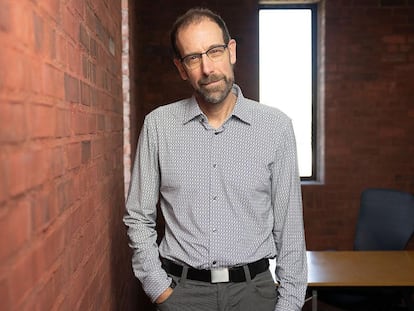Europe jumps on the train
More and more people are using this form of travel to get around the continent, using high-speed routes and a network of night trains that continues to expand. We traveled from Madrid to Prague and witnessed how the future of European transportation is clean and fast

Rébecca Hagège, a 33-year-old from Paris, made a decision some time ago: she would cut down on her air and automobile journeys as much as possible — only making them when it was unavoidable — in order to reduce her carbon footprint. Faithful to her bicycle for her daily commute, the train has become her best ally for travelling further afield, across her own country and, more recently, across the rest of Europe as well. Or at least as far as the infrastructure will allow: on one of her last getaways, a few months ago, her preferred train ran aground in Madrid, and with no viable alternative to continue her route to Lisbon, she was forced — much to her regret — to opt for the bus.
Her case is by no means unique. “Many of my friends practically only travel by train,” says this documentary production manager. She sees, however, much room for improvement, especially in terms of offering more frequent night trains, which, after a time in the back burner are now growing like mushrooms in Europe (with the exception of Spain) and, above all, with lower prices. “It is a pity, but on many European routes, such as between Paris and London or between Paris and Barcelona, the train is still more expensive than the plane or the bus,” she laments. “More incentives are needed.”
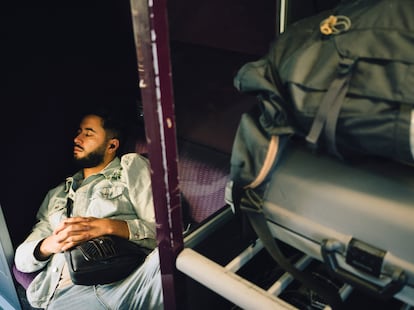
Hagège meets us on board a low-cost train between Madrid and Barcelona, a two-hour-plus route inaugurated in 2008 shortly before the housing crisis, and which has great symbolic power: this is the route that completely changed the Spanish map of passenger transportation. At the expense, of course, of everything other than high-speed trains, which have been the sacrosanct priority in Spain, almost the only one, for several decades. This meeting point is also the beginning of a 26-hour, 3,000-kilometer journey between Madrid and Prague. A journey from west to east of the European Union in which we aim to use practically all existing railway lines — high and medium speed, traditional and low cost, night trains and day trains — with no other goal than to narrate an increasingly widespread desire: to get on the train and prove that, with its many shortcomings, train travel is no longer just an option for short journeys.
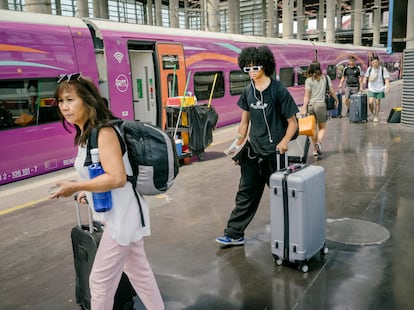
Growing numbers of Europeans are thinking — and acting — like Hagège. Young people, especially, for climatic reasons: switching from planes or cars to trains drastically reduces carbon dioxide emissions. But there is more to it than that: the energy crisis of 2022 accelerated Brussels’ plans to develop a true continental railway network, promoting connections between countries and, above all, night trains, which for years had been relegated to ostracism but re-emerged after the Covid pandemic. The European Commission has supported a dozen pilot projects for new cross-border connections that are “more frequent, faster and more affordable.” And the European Investment Bank (EIB), a financial arm with increasing influence on the EU scene, has supported the railway initiative with multimillion-dollar loans to projects such as the purchase of new high-speed and freight equipment from the Spanish railway company Renfe.
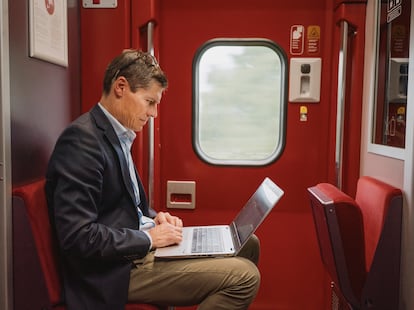
In addition to environmental and energy-related concerns, the two variables that typically determine whether one wants to get on the train, there are a few more of an individual nature. Who hasn’t felt frustrated by the endless security checks and the rush at airports? And there are also those who, tired of a society that moves too fast, are looking for a different pace for their professional and leisure time. A slower, more leisurely — more humane? — pace in which the train has no rival.
Fiona Smart, a 52-year-old from Britain, is convinced of it. On this Wednesday in early July she is travelling to Frankfurt from Pla de l’Estany, in Spain’s northeastern region of Catalonia, where she has been running an eco-friendly rural hotel for two decades. The reason for the trip: the sustainability of tourism. She paid €100 for the one-way trip, having booked well in advance. “It’s not bad, but both the plane and the car are usually cheaper, especially if, like us, you travel with your family. It shouldn’t be like that.” She herself, in fact, will return home by plane due to incompatible schedules.
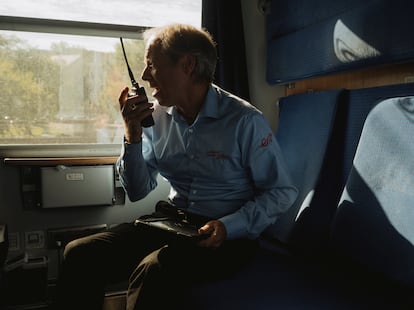
In contrast to a trend that is spreading relentlessly in central and northern Europe, where the train has not stopped gaining followers for international travel in the last four years, she sees something else going on in the south: “Going from Barcelona to Madrid is much easier and cheaper than it was a few years ago, but the frequencies between France and Spain are much fewer.” Before the pandemic, she says, “many more” hotel guests opted for this option for travelling, quite a few with their bicycles on board. All this, she emphasizes, despite the discounts that she herself offers to guests who opt for the train instead of the plane.

It’s not just the trains between France and Spain that have suffered. On the Iberian Peninsula itself, night trains, which are experiencing a real boom in the rest of the continent, have completely disappeared since 2020, when both the Trenhotel that connected Madrid and Barcelona with Galicia and the much-missed Lusitania, which reached Lisbon, stopped operating. The reason given was that they were operating at a loss.
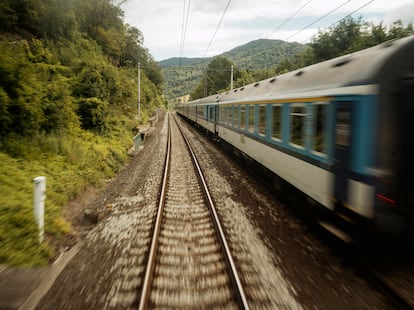
“In the 1950s and 60s, railways were very important in Spain, but cars ate them up. And the arrival of low-cost airlines was the final straw in the 1990s and, of course, in the 2000s,” explains Pedro Cantos, a professor at the University of Valencia specializing in transport economics. In recent times, high-speed rail has radically changed this trend on many routes between large Spanish cities, especially with origin or destination in Madrid, where the plane has become almost marginal. “Road transportation, on the other hand, is still holding its own. And the [combustion] car pollutes a lot,” he recalls. Not to mention the transport of goods, where —despite the advances— the diesel truck is still king.
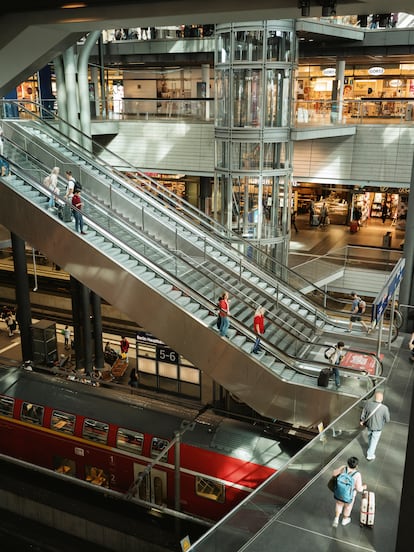
Rolando Morales and Susana MacIntosh, a married couple of teachers from Oakland (California), have crossed the Atlantic by plane to spend their summer holidays in four European countries: Greece, Spain, France and the United Kingdom. Their rule: all their trips would be by train until their return to San Francisco airport. “We are much more aware of the impact of our emissions,” says Morales, 53, comfortably reclining in his seat on the way to Paris. It will be just over six hours of travel from Barcelona, four less than by car, and not much more than by plane if you add everything up: going to the airport, security checks and the obligatory wait before boarding. By train, you only need to arrive 10 minutes early.
Morales, MacIntosh and their two teenage kids flew from the United States to Athens a little over a week ago. “If we wanted to come to Europe, there was no other option,” they say. They also had little choice for their next trip, to Seville: Greece is one of the few countries in the 27 EU member states that cannot be entered or exited by rail. However, they will not get off the train again for the next two months: Valencia, Barcelona, Paris, London and Edinburgh, their final destination. “Whenever possible, it is our first choice for travel. And in Europe, unlike in our country, we have many more options,” MacIntosh adds.
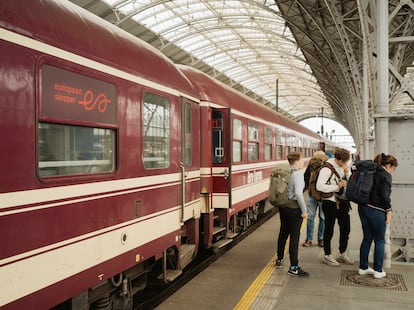
A few rows ahead is another North American citizen, Clement Cost, a 39-year-old from Canada. He takes the opportunity to stretch his legs and have a drink in the neat and well-equipped — though old-fashioned and very expensive — cafeteria car of a high-speed TGV inOui train. At his side is his three-year-old son, for whom the journey is a game; his partner is waiting for them in her seat. The three of them flew four days earlier to Barcelona and, like Morales and MacIntosh, the rest of their journeys will be made by train. Almost all of it will be on the high-speed network: Girona, Montpellier, Toulouse, Bordeaux, Paris, Lille and Brussels, to return home after three weeks of vacation. “In Canada it would be simply unimaginable: you can barely go from Montreal to Toronto… Here you can go practically everywhere,” he smiles with satisfaction. “It is very comfortable, especially with children; you avoid driving; and the environmental impact is smaller… What more could you want?”
The European country where rail travel is most popular is Switzerland, with an average of 1,536 kilometers by rail (on national and international trips) per inhabitant, followed by France (1,121 km) and Austria (902 km). There are students, families with children, young and older couples. And tourists, lots of tourists. Throughout the trip to Prague, Castilian Spanish and French are mixed with Catalan and English. Also with German and Dutch. It is the best side of a continent in which there persists a dangerous effort to limit a mixture that makes it richer.
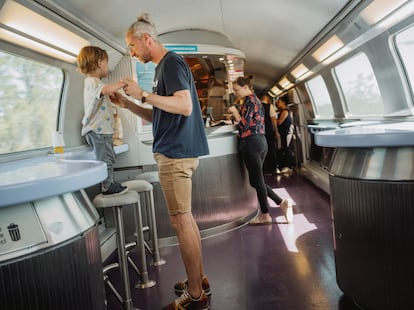
Inès Martínez is a child of that mixed Europe: 23 years old, French, the granddaughter of Spanish immigrants, and practically bilingual. She will only make a short journey, between Toulouse, where she studies, and Nimes. Like Hagège, she always gets around the city by bicycle and public transit. Never by car. And for her longer trips, her preference is always the train. “Even if it takes longer or is a bit more expensive… As long as the difference is not too great, of course,” she laughs. She tries to reserve the plane for long journeys. “If there were more options and, above all, if it were cheaper, I would definitely stop flying and travelling by car.” It is the closest thing to a flexitarian diet, as a preliminary step to veganism, but in a transportation version.
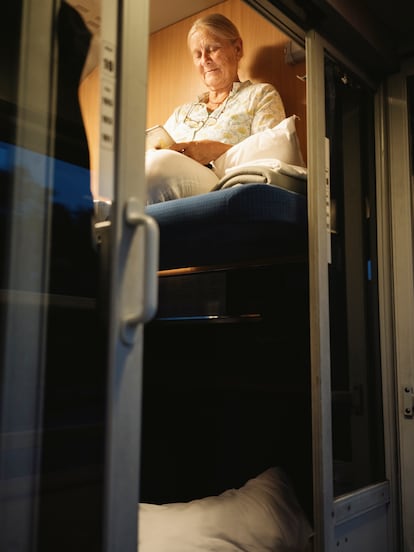
Price is indeed one of the variables that inhibits a faster flow of passengers from the plane, bus and car to the train. Even among those who are convinced of its benefits but often face a disproportionate cost in exchange for reducing their emissions. Or the always difficult dilemma between pocketbook and values. Greenpeace illustrates this in a recently released monograph on the subject. It is possible, it said, to take a train in Paris at 8am and arrive in Copenhagen at 9pm. Of course, it means changing trains a couple of times (in Cologne and Hamburg, with the consequent risk of missing the connection) and paying almost €300 compared to flights that can cost up to 20 times less. “The train is at a clear disadvantage compared to the plane: on international flights you do not pay VAT,” complains the report.
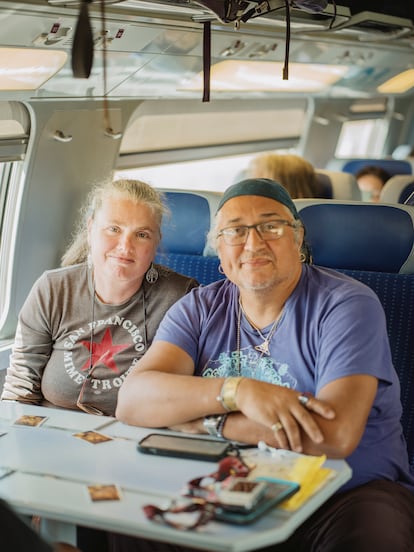
After Paris comes a stop in Brussels, always with Prague as the final destination. There is a change of station, train and company: from the French SNCF to the pan-European Eurostar. There is also a visible change in the profile of the travellers. There are fewer baby strollers and backpacks. In their place, shirts and ties are making their way. Like that of Jean-François Folie, a 54-year-old Belgian executive at a French logistics company with more clients in Paris than in the European capital. He travels there at least once a week. “Always by train,” he explains. Almost three decades after its inauguration, the route — one of the most profitable in the still semi-liberalized European railway market — has become an icon of how the train, if it is fast (the route takes about two hours) and reliable, naturally pushes aside cars and planes: despite the density of travellers, today there are only two daily flights between Paris and Brussels. Both are aimed at those travelling to connect with an intercontinental flight.
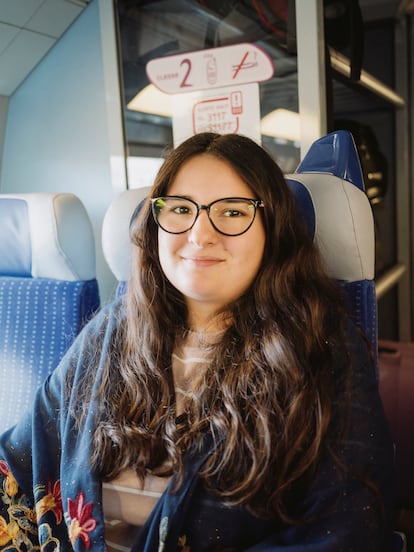
Folie’s routine is nothing like it was a decade ago, when he systematically made his journeys by car. “It was tiring and didn’t allow me to work; I can work while I am on the train,” he says, with his laptop on his lap. “And it drops me off in the city center, without having to look for parking space.” The climate issue has not been, in his case, the determining factor in switching from four wheels to rails: “It’s much more comfortable and safe,” he says. Two attributes that more than compensate for the slightly more than €120 per journey. “The service is good, comfortable and punctual, but also very expensive: it should be much cheaper so that more people would take it, especially if it’s during a holiday…”.

The conversation has barely finished when the PA system announces that the train is about to pull into the old Brussels Midi station. The journey then continues — Antwerp, Rotterdam and Amsterdam — but the objective is now different: to board one of the new night lines that promise to connect most of the capitals of Central Europe in the coming years. With a commitment: if a massive roll-out of the sleeper train is achieved that can compete head-to-head with the plane, the potential reduction of total CO2 emissions in Europe would be around 3%, which is a lot. Another figure, also from the Back on Track network, which works to bring back cross-border night trains: on long distances, the plane emits 28 times more than the train.
In the wake of the high-speed train — mainly in Spain, the country that has embraced it most enthusiastically — the biggest novelty of recent times is the return of the night train. The option had practically disappeared from many countries, even those with the greatest railway tradition, but it is now returning with a force that few were able to anticipate.
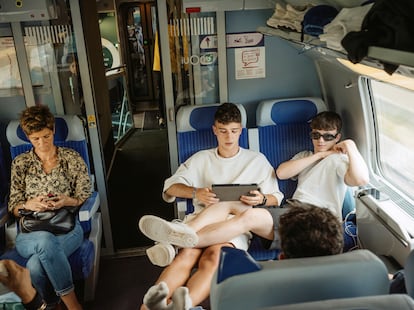
It was in the distant 2016, shortly after the all-powerful Deutsche Bahn announced the replacement of its sleeper train routes with high-speed trains, when its Austrian neighbour ÖBB launched the Nightjet brand to operate from Vienna or Salzburg on a good number of routes throughout Europe. That symptom of a resurgence that few believed possible lay fallow for years until the Covid lockdowns and the new desire to continue travelling, even more if possible, but in a different way.
This second wave is led by a new Dutch cooperative, European Sleeper, which last year inaugurated its first route between Brussels and Berlin and has just now extended it to Prague: 13 hours in which, practically all night long, the train crosses Germany from west to east.
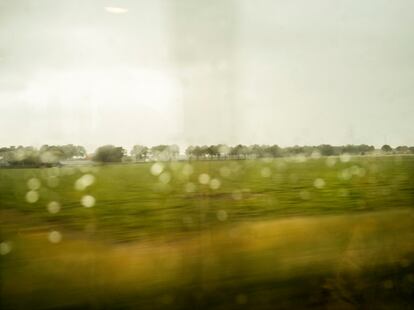
It is a train that is almost from the past: 15 carriages, mostly built in the 1970s and slightly, only very slightly, updated, with compartments for one, three or five people. Packed to the rafters on most routes, it can carry almost 600 passengers — the equivalent of three of the planes that usually operate on routes like this one. “There is a clear market for night trains: there are hardly any free seats left to reserve on this route between now and September,” notes Bart Poels, the train’s dedicated head of service, as he checks the data on a tablet.
Poels’ own case is paradigmatic. A fan of transportation in all its forms, he divides his time between stations and airports: in addition to European Sleeper, which is currently fighting to secure a night connection between Amsterdam and Barcelona, he works as a flight attendant for the charter airline Air Belgium. “All my life I have combined the plane and the train,” he says as the stations pass, surrounded by on-board manuals and walkie-talkies, and with the first light of dawn appearing on the horizon. He is the most veteran of a cabin crew that rarely exceeds 30 years on average and whose many duties include warning — and often waking — passengers when their destination station is approaching.
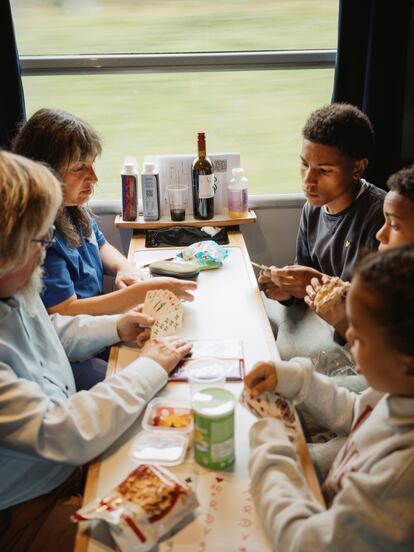
The night train passengers are a microcosm in themselves. Rather than the archetypal profile of the intrepid backpacker, the young man who hops on the Interrail in his last summer before going to university, the protagonists of this revival are many and varied: executives of climate-conscious companies, bohemians, solo travellers and families in search of a different experience.
The latter is the case of the Staelens couple, originally from Bruges, who are travelling to Berlin to visit the city with their three grandchildren. They have just finished dinner in their own compartment, where they make up the bed for the five of them and, like Martínez, practice a kind of transport flexitarianism. “We still travel by car and by plane, but whenever we can we go by train. Our carbon footprint on a daily basis is already significant enough without increasing it even further,” says Amra, 61. It is the second time she has taken a night train in recent months: before Berlin she went to Vienna. “If you manage to sleep, you arrive feeling rested. And we save a night in a hotel, which is not exactly cheap… All in all, even if the train is more expensive, it ends up being cheaper. Especially if we go with the children,” she adds from her bunk, shortly after collecting the deck of cards with which they have whiled away the time before going to bed. Bart, “66 going on 67″, with a prominent white beard and a sailor’s face, had not spent the night on a train for almost three decades. “This way it’s not just an adventure for the kids, it’s also an adventure for me,” he smiles proudly.

Travelling one compartment further is Nicole Decourriere, a 67-year-old Brussels native with a permanent smile on her face. After many years working as a teacher in Nepal, she is devoting her retirement to one of her leitmotivs: Buddhism, which is taking her to the Czech capital this first Wednesday in July to take part in a meditation meeting. Why take a sleeper car? She gives three compelling reasons: one for the environment — “it pollutes much less” — one for convenience – “I can get on in the center and it drops me off in the centre” — and one for quasi-sentimental reasons — “I remember the night trains when I was young… and I want to try out what they are like now.”
Decourriere shares a space — and the early morning — with Rajesh Chandra and Sibghatullah Ahmed, 46 and 41, residents of Lyon and workers for the NGO Handicap International. They are travelling from Lyon to Brussels, and then to Berlin, for a work meeting. Accustomed to the night trains in Bangladesh and India, where they are from, they have never tried it in Europe. “We are curious,” they admit almost in unison in the space for five people that they will share with three other passengers for the next 11 hours. “Travelling by train is about making friends. On a bus or a plane you rarely talk to the person sitting next to you; here you do socialise.” One more reason to finally get on the train.
Sign up for our weekly newsletter to get more English-language news coverage from EL PAÍS USA Edition
Tu suscripción se está usando en otro dispositivo
¿Quieres añadir otro usuario a tu suscripción?
Si continúas leyendo en este dispositivo, no se podrá leer en el otro.
FlechaTu suscripción se está usando en otro dispositivo y solo puedes acceder a EL PAÍS desde un dispositivo a la vez.
Si quieres compartir tu cuenta, cambia tu suscripción a la modalidad Premium, así podrás añadir otro usuario. Cada uno accederá con su propia cuenta de email, lo que os permitirá personalizar vuestra experiencia en EL PAÍS.
¿Tienes una suscripción de empresa? Accede aquí para contratar más cuentas.
En el caso de no saber quién está usando tu cuenta, te recomendamos cambiar tu contraseña aquí.
Si decides continuar compartiendo tu cuenta, este mensaje se mostrará en tu dispositivo y en el de la otra persona que está usando tu cuenta de forma indefinida, afectando a tu experiencia de lectura. Puedes consultar aquí los términos y condiciones de la suscripción digital.

